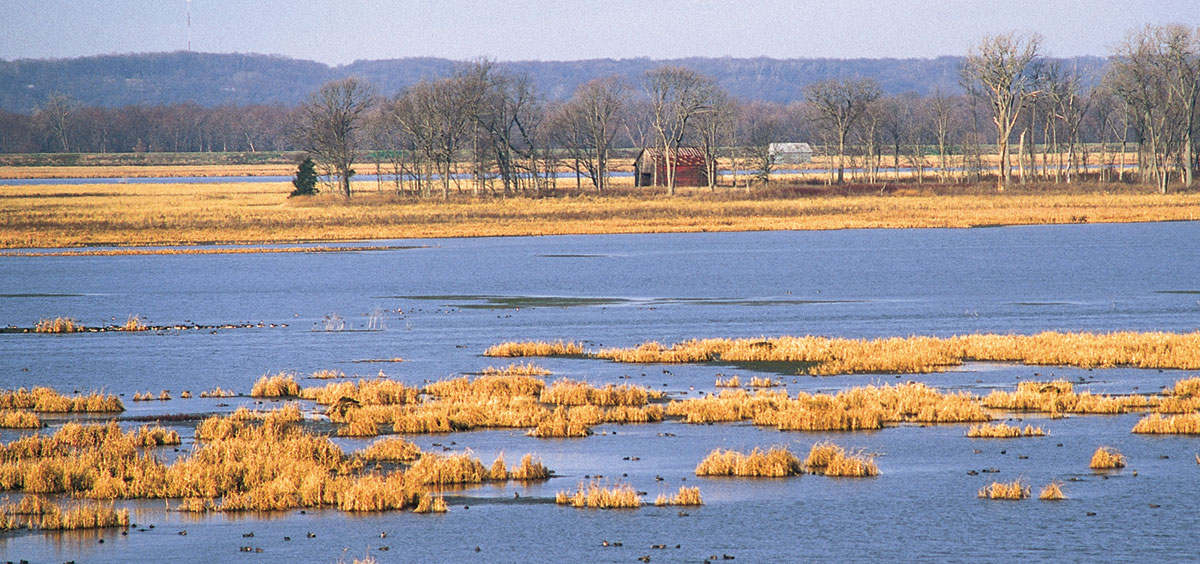
Gadwalls. Photo by Michael R. Jeffords



Gadwalls. Photo by Michael R. Jeffords
Division of Illinois Duck Stamp funds is the responsibility of the Duck Stamp Committee, composed of representatives from various offices within the Illinois Department of Natural Resources (IDNR) and non-profit waterfowl organizations. Monies derived from the Migratory Waterfowl Stamp Fund are deposited in the State Treasury. Specifications for use are included in the statute and as follows: http://www.ilga.gov/legislation/ilcs/ilcs3.asp?ActID=1729&ChapterID=43
Habitat Projects
Funds are competitively applied for by IDNR Division of Wildlife Resources District staff or Office of Land Management site staff. Projects are guided by the Wetlands Campaign of the Illinois Wildlife Action Plan to ensure they focus on the areas of the state and on the types of habitats that are most critical for wetland dependent wildlife, including waterfowl. Projects typically focus on habitat or infrastructure to manage habitat. See: https://www.dnr.illinois.gov/conservation/IWAP/Pages/default.aspx

Examples include:
Distribution of Funds
Since most migrating ducks that come to Illinois during the hunting season breed elsewhere, funds are sent out of Illinois to primary waterfowl breeding areas, including the most important duck breeding area in the world, the Prairie Pothole Region (PPR) of the United States and Canada (e.g. Saskatchewan, Manitoba, North Dakota, Minnesota). The vast, glaciated landscape can support more than 60 pairs of breeding waterfowl per square mile.
Over the life of the program Illinois duck stamp purchasers have sent more than $12 million to the Canadian prairies. To further Illinois’ conservation impact, Illinois Duck Stamps are used as a match to leverage other available funding sources (such as North American Wetland Conservation Act funds) to triple, quadruple or more, their conservation impact. This equates to Illinois’ contribution being an important first step for these organizations to annually secure millions of dollars for critical habitat conservation.
A full 50 percent of annual duck stamp funds are sent to non-profit organizations doing wetland and grassland habitat conservation work in Saskatchewan and Manitoba. Funds may be utilized for:
Maintenance

The final category receiving a portion of Duck Stamp funds is typically referred to as maintenance. These funds attempt to provide a source of funds for repair and replacement of infrastructure and equipment at state waterfowl management sites. Floods, ice and age all take their toll on levees, pumps, culverts, water control structures and nearly anything else used to manage wetland habitat. In years where a surplus of funds remains, diesel fuel to operate pumps may be purchased to offset pumping costs and guarantee waterfowl habitat and hunter access during fall.
Illinois Duck Stamp Funds provide a great opportunity for establishing and maintaining wetland habitat. What these funds do not support are other projects for hunter access. Projects to build duck blinds or boat ramps have been determined by the Duck Stamp Committee to not be in the spirit of the statute. Instead, the Committee focuses on projects that directly impact habitat.
Randy Smith is the IDNR Division of Wildlife Resources Wetland Wildlife Program Manager.
Submit a question for the author